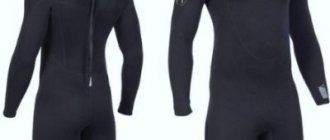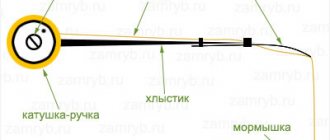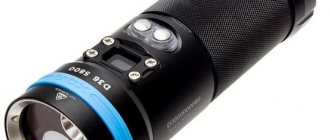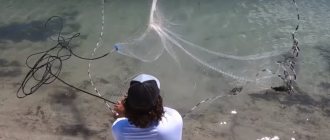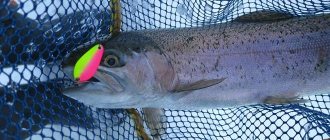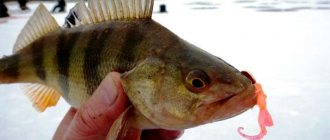Basic moments
After testing a number of models, the best waterproof camera was the Olympus Tough TG-6 , an easy-to-use camera that takes quality photos and shoots 4K video.
The camera display has high resolution. The shockproof, waterproof camera is also frost-resistant. Additionally, Olympus provides an accessory called an underwater case if you want to go deeper with the camera.
For deeper dives, the Nikon Coolpix W300 dives twice as deep as the Olympus and features a 5x optical zoom and built-in GPS.
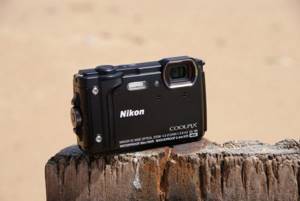
The GoPro Hero 8 is the best waterproof action camera with image stabilization and built-in mounting points. Functionality is enhanced by additional accessories such as a microphone and external light.

new WG-70 features a 5x optical zoom lens, a 16-megapixel CMOS sensor, microscope mode and six LEDs for macro photography. The camera also features a non-touch color LCD monitor, waterproof up to 14 meters and shockproof from 1.6 meters. However, the maximum video resolution is 1080p.
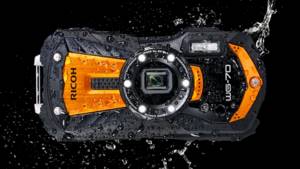
Olympus Tough TG-6
- MP/Sensor Type : 12 MP 1/2.3 BSI CMOS
- Water resistance : 50 m
- Withstands drops from height: 2 meters
- Video (maximum resolution) : 4K (30 fps)
- Display : 3 inches
- Wireless/Built-in GPS : Yes/Yes
- Battery life (CIPA) : 380 shots
- Dimensions and Weight : 4.4 x 2.6 x 1.3 inches / 255 grams
Price : $379
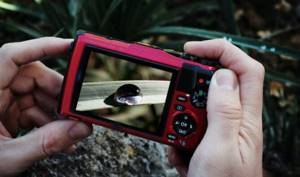
pros
- Menus, watch faces and controls offer multiple access points to settings
- Impressive macro features
- Shoot slow-motion video in HD resolution
Minuses
- The menu structure is a bit confusing
- Maximum depth 15 meters
The Olympus Tough TG-6 features a 12-megapixel sensor, f/2.0 lens, Olympus TruPic VIII image processor and 4x optical zoom, capable of shooting 4K video at 30 fps, as well as slo-mo 120 fps resolution 1080p. A number of underwater and macro modes are also available.
You may also be interested in the Olympus Tough TG action camera.

The TG-6 is waterproof to 15 meters, but that should be sufficient for scuba diving. Olympus provides a waterproof case for diving deeper than 15 meters. The camera is also shock-resistant and can operate in temperatures as low as -10 degrees.
The TG-6 also includes a field sensor system that tracks motion, temperature and location so you can then see statistics or embed that information directly into the shots you take.
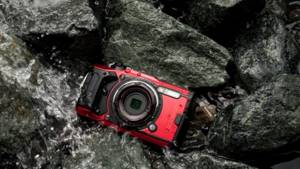
Flaws.
Oddly enough, the Lumix doesn't have any major drawbacks, but some of the other cameras we tested are slightly better at certain functions.
So Olympus has a faster f/2.0 lens, but this does not at all mean better pictures in real conditions (with the exception of dark conditions).
In underwater mode, the Olympus is also slightly superior to the Panasonic TS5, but both the image and video quality are better than the Panasonic camera.
A Nikon camera can work at depths of up to 18 meters, but a bad underwater camera will remain so in deep water. At the same time, the Panasonic TS5 is quite sufficient for shallow diving and snorkeling. If you want to get high-quality images at a depth of greater than 10-12 meters, then for this you will need completely different devices. Scuba divers, however, should consider Panasonic's $300 optional body, which allows you to shoot at depths of up to 45 meters.
There were some complaints about leaks with the previous version of the camera, but this year there have not been any complaints about this yet.
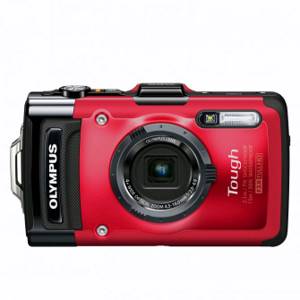
Nikon Coolpix W300
- MP/sensor type : 16MP/CMOS
- Water resistance : 100 meters
- Withstands drops from height: 2 meters
- Video (maximum resolution) : 4K/30 frame
- Display : 3 inches
- Wireless/Built-in GPS : Yes/Yes
- Battery life (CIPA) : 370 shots
- Dimensions and Weight : 4.4 x 2.6 x 1.2 inches / 226 grams
Price : $386
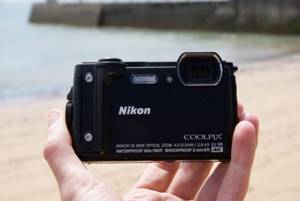
pros
- Versatile and easy to use
- Variety of video modes, including 4K and time lapse
- labeled and responsive controls
- Water resistant up to 30 meters
Minuses
- Full manual mode is missing
- Doesn't handle low light conditions
The Nikon Coolpix W300 16MP deep-sea camera has a more powerful 5x zoom lens (24mm to 120mm) than the Olympus (24mm to 100mm). Zoom is useful for capturing close-up images without the quality degradation that occurs when using digital zoom.
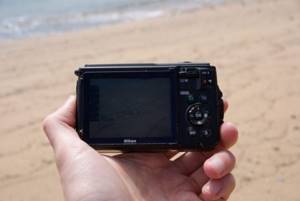
Like the TG-5, the W300 shoots video at up to 4K at 30fps and lets you take photos while recording video. The camera offers a variety of video settings, including slow motion and fast motion video.
However, the camera lacks the features that the TG-5 has. The W300 sports has built-in GPS, altimeter, and depth gauge. And like all of Nikon's latest cameras, the W300 features Snapbridge technology, allowing you to connect your phone to the camera using NFC, Bluetooth and Wi-Fi for quick photo sharing. Coolpix W300 is available in yellow, black and orange colors.

Necessary accessories for underwater photography
The “Everything you need for swimming” section has enough items for users. In this article we have compiled the optimal list of extras for GoPro HERO8. Compare our list with yours. Most likely there will be missing tools.
Dome Port Telesin
Are you planning to shoot a video capturing both the underwater and surface worlds? Then take a closer look at the Dome Port Telesin hemisphere. A small plastic dome is needed to create a clear water line. Let's not talk long about camera algorithms. The point is that with a dome, the GoPro will capture a clear line between the sky and water, but without it, the boundary will blur and become out of focus. Instead of a beautiful video there will be “soap”. So for mixed shooting, a hemisphere is simply necessary.
PolarPro AQUA filter set
The deeper we dive, the fewer light waves penetrate the water. First the red one goes, then the green one, and finally the blue one. Our brain completes the necessary colors, and we don’t notice the difference. But an action camera can’t do that: it fills the missing red shades with blue and green. To make red red, PolarPro has released a set of filters to solve this problem:
1. Violet glass, for greenish water in closed or inland reservoirs - rivers, lakes, ponds.
2. The pink filter is useful at shallow depths in blue or clear water. Most often it is put on the lens in the pool.
3. Red is a classic tool for filming when diving from 4.5 meters in blue, blue or clear seas.
Float SP POV DIVE BUOY
A short stick with a rubberized handle will float up if for some reason it falls out of your hands. The orange plug on the outside will help you quickly find the gadget.
Place information about the owner inside the stick in advance, in case the current carries away the equipment. Then there will be a chance to get it back. You can also store money or a certificate of medical contraindications in the cavity.
Cap mount with float
An accessory for those who need free hands. The mouthguard fits comfortably in the mouth and does not cause allergies or other unpleasant sensations. You can see where you are sailing, and the journey is filmed from the first person.
The box with the mouth guard contains a bright orange float. If HERO8 floats, it will rise to the top rather than fall like a stone. It's easier to look for an orange cube at the top than a black box at the bottom of the ocean.
Waterproof box
Used when diving to great depths, 10+ meters. The case protects the camera from the rigors of underwater travel. However, you should prepare for the fact that the microphones are blocked, and the sound will be slightly muffled.
LED flashlight SP POV Light 2.0
For the most daring divers. The flashlight turns on where there is no light. Please note that when using a flashlight, some filters will do more harm than good. Therefore, carry out calibration in advance.
Fujifilm Finepix XP140
- MP/sensor type : 16.4 MP/CMOS
- Water resistance : 24 meters
- Drop resistance : 2 meters
- Video (maximum resolution) : 4K/15 fps
- Display : 3 inches
- Wireless/Built-in GPS : Yes/Yes
- Battery life (CIPA) : 370 shots
- Dimensions and weight : 5 x 3 x 2 cm/104 grams
Price : $149
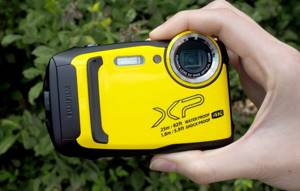
pros
- Inexpensive
- Water resistant up to 24 meters
Minuses
Low frame rate for 4K video
The Fujifilm FinePix XP140 costs just under $200, making it the best budget waterproof camera with water resistance up to 24 meters. This is more than Olympus, but less than Nikon. Withstands falls from approximately 2 meters, temperature ranges from -10 to +40 degrees.
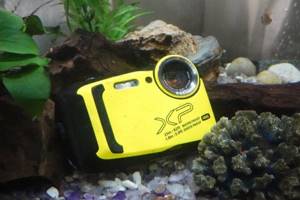
The FinePix XP140 features a 16-megapixel lens, ISO range 100-12800 and 5x optical zoom. The camera also shoots video in 4K, although at a low frame rate of 15 fps, so video can look choppy.
Cinemagraph mode lets you capture still images with moving elements , and the Smile Shutter feature will automatically take a photo when people smile. Connection to a smartphone or tablet via Bluetooth is also available.

GoPro Hero8 Black
- MP/Sensor type : 12 MP
- Water resistance : 10 meters
- Drop resistant: no
- Video (maximum resolution) : 4K/60fps resolution
- Display : 2-inch touch screen
- Wireless/Built-in GPS : Yes/No
- Battery (CIPA) : n/a
- Dimensions and Weight : 2.4 x 1.7 x 1.3 inches / 119 grams
Price : $299
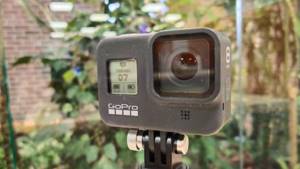
pros
- Significantly improved sound quality
- Sleeker Accessory Attachment System
Minuses
- The battery compartment is difficult to close
- The lens is no longer removable
The GoPro Hero8 Black has everything we loved about the previous model: a 12-megapixel lens for photos and video up to 4K (at 60 fps), slo-mo video at 240 fps. But the Hero8 has a new design so you no longer need a case to attach the camera to your helmet mount.
GoPro has also improved the Hero8's image stabilization , making videos incredibly smooth. You can also stream the camera live using the GoPro app so people can watch the action in real time.
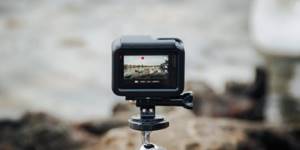
is equipped with a voice control system , which means that shooting can be activated by simply saying “start recording video” or “take a photo”.
The GoPro is also waterproof to 10 meters without an additional case. Sharing images is easy thanks to built-in Wi-Fi and a free app for Android, iOS and Windows Phone mobile devices.
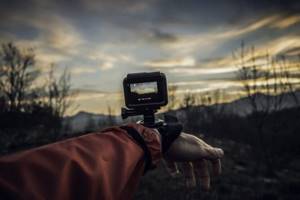
Smartphone Samsung Galaxy S20
Characteristics of the Samsung Galaxy S20 smartphone
- Exynos 990
- Dynamic AMOLED 6.2″
- 3D Glass Corning Gorilla Glass 6
- 90% usable screen area
- Camera 64+12+12 MP
- Sony main module
- 10 MP front camera from Sony
- Dolby Atmos support
- Dust and moisture protection IP68
- NFC
- Ultrasonic fingerprint scanner
- Battery 4000 mAh
- Fast charging 15W
- Reverse charging 9W
The 2021 smartphone, which replaced last year's flagship S10. The device received a screen with the same matrix, but with an increased diagonal - 6.2" instead of 6.1". The chipset in the smartphone is developed by Samsung, Exynos 990.
Like the previous model, the body is made of aluminum and glass, the edges of the device are sloping, the screen is rounded and protected by 3D Corning Gorilla Glass 6. The battery here is larger - 4000 mAh instead of 3400 mAh, and fast charging is faster - 15 W instead of 12 W Galaxy S10.
Unlike the Galaxy S10, this smartphone received camera modules from Sony: a 12 MP main lens and a 10 MP front camera. The rear camera is complemented by a 64 MP telephoto camera and a 12 MP ultra-wide camera. Thanks to IP68 water resistance, the smartphone can be used for filming underwater. One important detail - this will only work in cold water; the smartphone will not tolerate high temperatures.
How to choose the right waterproof camera
As with any camera, the first consideration when purchasing a waterproof camera is budget.
- The top two options, the Olympus Tough TG-6 and Nikon Coolpix W300, cost over $350.
- On the other hand, the Fujifilm FinePix XP140 costs less than $200, which is also a good choice.
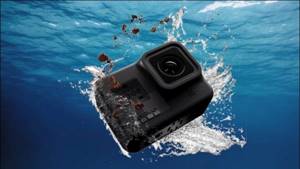
Think about where and how you plan to use the camera. If you are into scuba diving, then a waterproof camera that goes down to 15 meters should be sufficient.
For adventure sports, the GoPro Hero8 Black is the most compact option with image stabilization and can be installed almost anywhere.
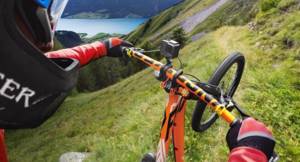
What types of cameras are there for underwater photography?
There are a huge number of different models on the market in different price categories and with different characteristics. All this seriously complicates the choice. And even professionals have a hard time. Typically, experts in the field of extreme photography distinguish two categories of underwater cameras:
- Shallow water cameras. Those with which it is not recommended to shoot at a depth of more than 10 meters; the operating time of the camera under water varies from 20 to 60 minutes. Their mission is to capture an eventful vacation. The housing of such devices is sealed, which protects the equipment from moisture, dust and shock. The camera is suitable not only for underwater photography, but also for working in rain, snow and wind. The disadvantage of shallow-water devices is that in order to get high-quality and clear images, the water must be crystal clear. Otherwise, the photos will be blurry and not sharp.
- Cameras for depth. This technique is professional and is maximally protected from moisture and shock. Designed for depths of up to 60 meters, but some cameras are capable of more. The advantage of such cameras is their long operating time in extreme conditions. On average, the duration of a shoot can be from an hour to two. Thanks to high technical characteristics, pictures are obtained in high quality and with high resolution. Professional underwater cameras come with specialized filters, flashes and lighting equipment. Such devices are perfectly protected not only from water pressure, but also from mechanical damage.
If your goal in buying a camera is to capture a colorful vacation, then take a look at cameras designed for shallow water.
Tips for Better Underwater Photos
There are many scenarios in which a waterproof camera can take unique photos or videos. Here are some tips to get the most out of your camera. Make sure the compartments are sealed. Water entering the camera will cause damage.
- Use a carrying harness . Some camera manufacturers make chest straps to allow hands-free shooting.
- Add a selfie stick . Be careful not to hurt others. Also, keep in mind that some places, such as museums and stadiums, often ban selfie sticks. Take the flash . Since some waterproof cameras have a macro mode, use a circular flash mounted around the camera lens to highlight small objects.
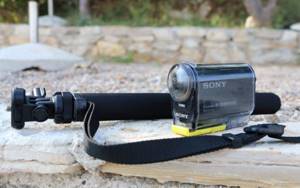
Waterproof cases and cases
If you already have a camera and don't want to buy a new one to go scuba diving, purchase accessories to make it waterproof. But first, find out what depth the hull strength is designed for.
Waterproof smartphone cases allow you to go underwater up to 2 meters deep, and often only for a short period of time, such as an hour. Such a case costs between 15-80 dollars, but models of cases designed for scuba diving cost more than 100 dollars.
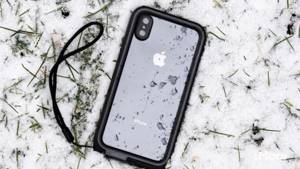
Accessories for standalone cameras are produced by both camera brands and third-party companies such as Ikelite or Aquatec. To put a camera in the case, you will have to spend money: prices range from $750 to $1,500.
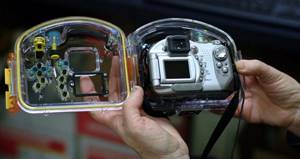
(Visited 366 times, 1 visits today)
What to look for when choosing a secure camera.
Here's what you should consider when choosing a secure camera based on our experience:
Image quality. If such a camera cannot provide a (relatively) high-quality picture, then what is the point of such a device? In addition, the device must take such shots in any of the most difficult conditions. But how to compensate for color rendition underwater? How will the device take pictures in low light from a fire or at sunset? These are important questions.
Ease of use. If you're risking your life in a fast-flowing mountain river in a canoe, for example, you won't have time to fiddle with ISO settings or any other settings. You just want the camera to be easy to turn on and take a photo quickly. If you want to switch between modes (HDR, underwater, etc.) or settings (flash on/off, etc.), you expect it to be simple and painless.
Video quality. This feature is very important these days; you want video with smooth focusing, good dynamic range, and minimal noise.
Strength. And of course you need a reliable and durable camera. After all, this is one of the key features of the device. The camera should continue to work after being dropped from a height of no more than 2 meters and work at a depth of at least 10 meters (although obviously the deeper the better). It is also worth paying attention to the factor of the strength of the case. It is desirable that the device can withstand the weight of a photographer who accidentally stands on it (at least 90 kg).

